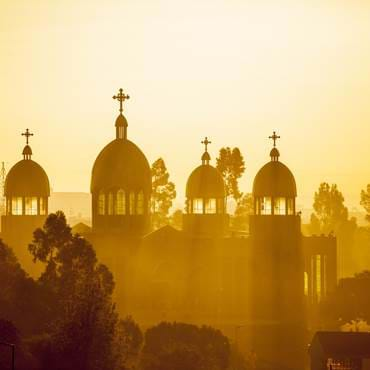
Ethiopia
Ethiopia, in the Horn of Africa, is split by the Great Rift Valley and is a landlocked country. With archaeological finds spanning back more than 3 million years, it’s a mystical land brimming with ancient culture. Key sites are Lalibela and its rock-cut Christian churches from the 12th–13th centuries. Aksum is the ruins of an ancient city with obelisks, tombs, castles, and Our Lady Mary of Zion church.
Some of the oldest skeletal evidence for anatomically modern humans has been discovered in Ethiopia. It is widely thought to be the region from which modern humans first journeyed to the Middle East and places beyond. The first Afroasiatic-speaking populations settled in the Horn region during the ensuing Neolithic era, according to linguists. Tracing its roots to the 2nd millennium BCE. Ethiopia's governmental system was a monarchy for most of its history. According to oral literature, the thought is that the monarchy was founded by the Solomonic dynasty of the Queen of Sheba, under its first king, Menelik I. In the 1st century, the Kingdom of Aksum maintained a unified civilisation in the region, followed by the Ethiopian Empire circa 1137.
Ethiopia is a land of natural contrasts, with its vast fertile west, its forests, and numerous rivers, and the world's hottest settlement of Dallol in its north. The Ethiopian Highlands are the largest continuous mountain ranges in Africa, and the Sof Omar Caves contain the largest cave on the continent. Ethiopia also has the most UNESCO World Heritage Sites in Africa, which is why it is a must-visit on the archaeological traveller's bucket list.
 GB
GB
 US
US



